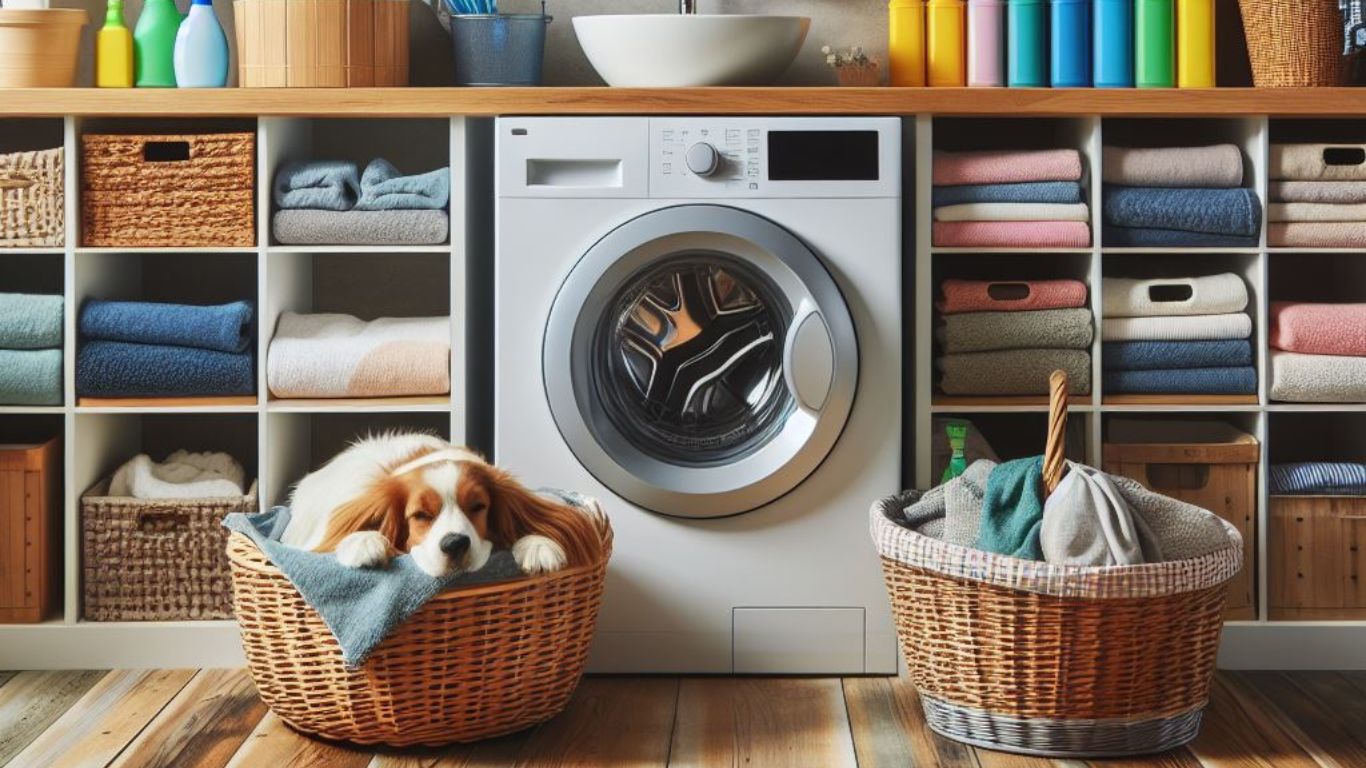14 Feb The Hidden Germs in Your Laundry: How to Ensure Hygienic Cleaning
Laundry is a routine chore that most of us do without much thought. We toss our clothes into the washing machine, add detergent, and hit the start button. But have you ever considered the hidden germs lurking in your laundry? This article delves into the importance of hygienic laundry practices and provides insights on how to ensure a truly clean wash.The Hidden Germs in Your Laundry
Laundry, a seemingly straightforward chore, may hide a plethora of unseen germs that could impact our health. As we go about our daily lives, various types of microorganisms find their way onto our clothes, turning our laundry into a breeding ground for potential health hazards.
- Bacteria: Microscopic bacteria, including notorious ones like E. coli and Staphylococcus, are known to take residence in our laundry. These unwelcome guests can pose serious health risks if not effectively eliminated during the washing process.
- Viruses: Yes, even viruses can hitch a ride on our clothes. Common cold and flu viruses, prevalent in our surroundings, can survive on fabrics, potentially leading to the spread of illnesses within our households.
- Fungi: Molds and fungi thrive in damp environments, and if our laundry doesn’t dry adequately, these microscopic organisms can make themselves at home in our clothes. This not only affects the cleanliness of our garments but also poses health risks.
Health Risks Associated
As we uncover the hidden germs in your laundry, it becomes imperative to understand the potential health risks associated with these microorganisms. The seemingly innocuous act of wearing clothes may expose us to a range of health hazards, making it crucial to adopt hygienic laundry practices.
- Skin Infections: Wearing clothes teeming with germs can contribute to skin infections. Bacteria such as Staphylococcus aureus can lead to conditions like impetigo or folliculitis, causing discomfort and irritation. Maintaining a hygienic laundry routine is essential in preventing these skin-related issues.
- Respiratory Issues: Inhaling airborne particles released during the laundry process, especially if contaminated with viruses or mould spores, can result in respiratory problems over time. Individuals with allergies or asthma may find their conditions exacerbated by exposure to these contaminants.
Factors Contributing to the Growth of Hidden Germs in Your Laundry
While the laundry process is designed to cleanse our clothes, several factors can contribute to the persistence and growth of germs, turning our laundry routine into a potential breeding ground for microorganisms.
- Washing Machine Conditions: Neglecting the cleanliness of your washing machine can turn it into a haven for germs. Over time, residues from detergents and fabric softeners can accumulate, providing an ideal environment for bacteria and mould. Regular maintenance, including cleaning the drum and dispensers, is crucial to prevent this build-up.
- Dampness: Leaving laundry in the machine or hamper for an extended period allows dampness to set in. Damp conditions are conducive to the growth of mould and mildew, posing a threat to both the fabric and our health. Proper ventilation and timely removal of laundry are essential to mitigate this risk.
- Infrequent Washing: Infrequent washing of clothes allows germs to accumulate, increasing the risk of infections. Clothes worn close to the skin, such as undergarments, socks, and sportswear, demand more frequent washing. Establishing a regular laundry routine is essential to prevent the build-up of harmful microorganisms.
How to Ensure Hygienic Laundry
Maintaining hygienic laundry practices is essential to safeguard our well-being and prevent the proliferation of germs on our clothes. Here are actionable steps to ensure your laundry is not only clean but also free from potential health threats:
- Temperature and Detergent: Start by choosing the right temperature and detergent. Washing at higher temperatures, around 60 degrees Celsius, is effective in killing germs. Additionally, opt for quality detergents with antibacterial properties to ensure a thorough clean.
- Regular Washing Machine Maintenance: Regularly clean your washing machine to eliminate accumulated bacteria and mould. Run a hot water cycle with vinegar or use a specialised washing machine cleaner. Pay attention to seals, dispensers, and the drum to ensure a germ-free environment.
- Proper Drying Techniques: Ensure your clothes are thoroughly dried after washing. Dampness can encourage bacterial growth, so use a dryer or hang your laundry in direct sunlight. Sunlight acts as a natural disinfectant, effectively killing germs and providing a fresh scent to your clothes.
- Use of Disinfectants: Consider adding disinfectants or antibacterial laundry boosters to your wash. This extra layer of protection ensures that even stubborn germs are eliminated, leaving your clothes hygienically clean.
Importance of Separating Different Loads
One often overlooked but crucial aspect of maintaining hygienic laundry is the practice of separating different loads. This goes beyond just sorting clothes by colour – it involves considering fabric types, levels of dirtiness, and potential cross-contamination. Here’s why it’s essential:
- Preventing Cross-Contamination: Separating loads based on colour and fabric type helps prevent cross-contamination. Washing white fabrics with dark ones, for example, may result in colour bleeding, potentially ruining your clothes. Moreover, washing heavily soiled items separately avoids transferring dirt to cleaner clothes.
- Optimising Cleaning Efficiency: Different fabrics require different care. Delicate items, like silk or lace, need a gentler cycle, while sturdy fabrics, like denim, can withstand a more robust wash. Separating loads based on fabric type ensures each item receives the appropriate treatment for optimal cleaning efficiency.
- Avoiding Fabric Damage: Mixing fabrics with varying care requirements can lead to fabric damage. Delicate fibres may fray, shrink, or lose their shape when exposed to harsher washing conditions. By segregating loads, you preserve the integrity of each fabric, extending the lifespan of your clothes.
Choosing the Right Laundry Products
Selecting the appropriate laundry products plays a pivotal role in ensuring your clothes not only come out clean but also free from harmful germs. Here are key considerations when choosing the right laundry products:
- Antibacterial Detergents: Opt for detergents specifically formulated to kill germs. Antibacterial detergents provide an added layer of protection, ensuring that bacteria and other microorganisms are effectively eliminated during the washing process.
- Fabric Softeners: Some fabric softeners go beyond providing a pleasant scent and softness – they also contain antibacterial properties. Choosing a fabric softener with these additional benefits contributes to a more hygienic laundry routine.
Tips for Personal and Family Hygiene
Maintaining personal and family hygiene extends beyond just clean clothes. Here are some essential tips to ensure a comprehensive approach to hygiene in your household:
- Washing Hands: Encourage regular handwashing, especially after handling dirty laundry. Hands can easily transfer germs, and thorough washing helps prevent the spread of bacteria and viruses.
- Changing Clothes Regularly: Make it a habit to change into clean clothes daily. This practice not only contributes to personal comfort but also reduces the risk of carrying germs on your body.
- Disinfecting Laundry Baskets: Regularly clean and disinfect laundry baskets. These containers can harbour germs, especially if clothes are damp or soiled. Keeping them clean ensures that your freshly laundered clothes remain free from potential contaminants.
Special Considerations for Baby and Pet Laundry
When it comes to the laundry needs of infants and pets, special considerations are necessary to ensure their well-being. Here are tailored tips for baby and pet laundry:
- Baby Clothes: Use gentle, hypoallergenic detergents for washing baby clothes. Babies have delicate skin that is more sensitive to harsh chemicals found in regular detergents. Washing their clothes separately and with a suitable detergent helps prevent skin irritation and allergies.
- Pet Beddings: Wash pet beddings frequently to eliminate odours and germs. Pets bring outdoor elements into your home, and their bedding can harbour dirt and bacteria. Regular washing not only keeps your home smelling fresh but also creates a healthier environment for both pets and their owners.
The Last Word
Maintaining a hygienic laundry routine is essential for overall well-being. Understanding common germs, associated health risks, and factors contributing to their persistence enables targeted strategies. From selecting the right products to considering special needs for baby and pet laundry, each aspect plays a vital role. Incorporating sunlight for natural disinfection and being mindful of the environmental impact further elevates our cleanliness approach. By following these practices, we not only protect ourselves from health hazards but also contribute to a healthier living environment for everyone in our homes.





Sorry, the comment form is closed at this time.